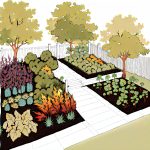Beautiful Plants For Your Interior

As global food insecurity intensifies, the remarkable promise of edible landscaping is impossible to overlook. This innovative approach to urban and suburban planning transforms more than just the visual appeal of our communities. Edible landscapes serve a dual purpose: they enhance the productivity of our outdoor areas while offering a tangible solution to the challenges of food scarcity. This forward-thinking strategy not only beautifies our environments but also turns them into fruitful sources of sustenance.
Edible landscapes, also known as foodscaping or culinary landscaping, turn traditional horticulture on its head by primarily planting useful, edible plants. It’s where landscape design meets agriculture, transforming home gardens, public parks, and even business exteriors into fruitful spaces.

Unfortunately, with over 800 million people worldwide suffering from chronic undernourishment, food insecurity is a pressing challenge. Food prices and availability are major concerns, particularly in urban and impoverished areas. These areas are frequently classified as ‘food deserts.’ In these zones, finding fresh and affordable food is a significant challenge. Addressing this worldwide problem at a local level is crucial. One promising solution is the concept of edible landscapes. These can be established in our own backyards or local neighborhoods. Edible landscapes offer a way to access nutritious food right where we live.
Welcome to what we believe to be a fresh perspective on the connection between edible landscaping and food security. This integrative approach incorporates everything from fruit tree landscaping to urban kitchen gardens and offers an exciting, yet practical, blueprint for the future of our food systems. First, let’s begin by discussing the important role edible landscapes play in reducing food insecurity.
The Important Role of Edible Landscaping
The role of edible landscaping extends much further than simply gardening edible plants in our backyards. It is a practice that touches each aspect of our community, from bridging the nutritional gap to bolstering the local economy.
Edible landscaping, a practice that integrates food-producing plants into urban and suburban landscapes, offers multifaceted benefits that ripple through communities. Edible landscapes do more than just supply fresh, nutritious produce straight from the garden to the table. They also strengthen the bond between people and their food sources. This connection boosts awareness and appreciation for sustainable food systems. The American Society for Horticultural Science highlights the value of these practices, especially in urban areas. In cities, green spaces are scarce and accessing fresh produce can be difficult. These edible landscapes offer a vital solution.
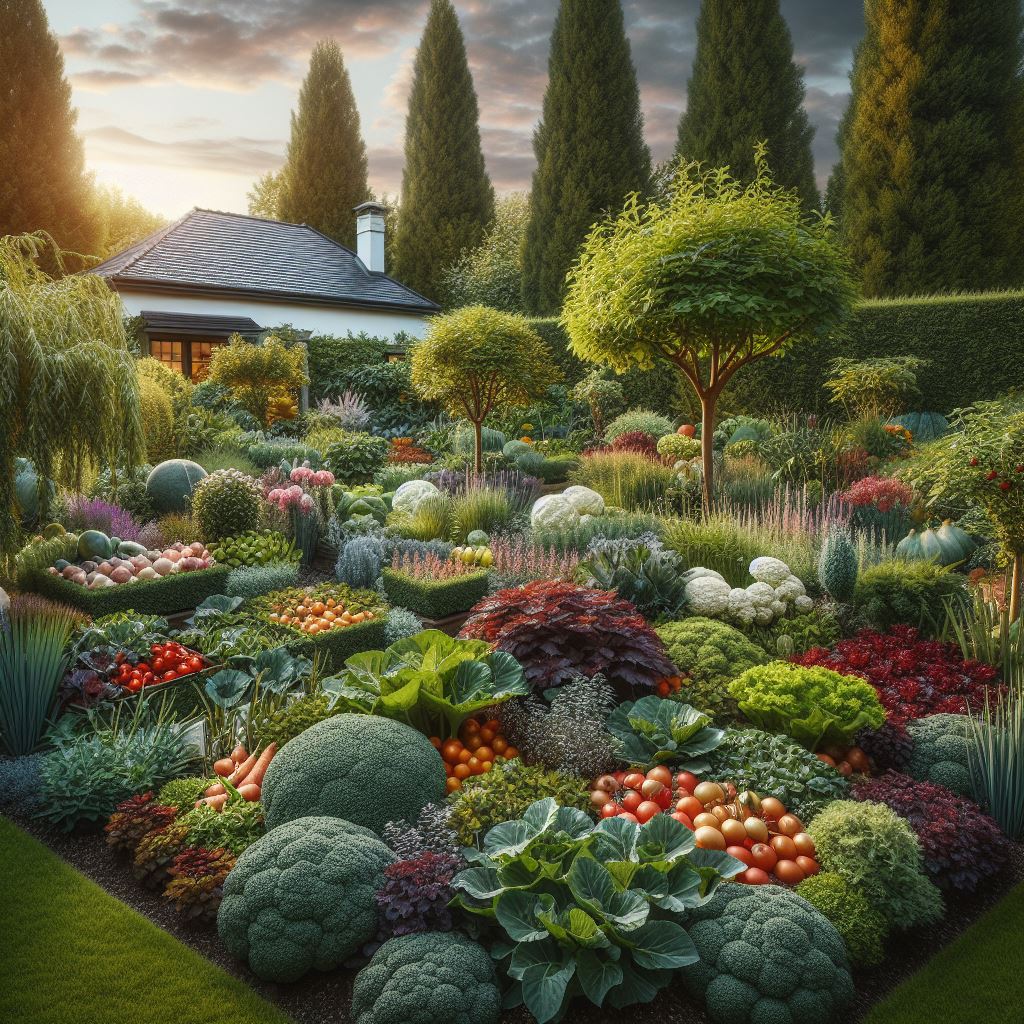
Furthermore, edible landscapes can play a significant role in strengthening local economies. Encouraging local food production helps communities depend less on imported goods. This keeps more money within the local economy and supports area farmers and gardeners. In turn, this can create jobs and open up new business opportunities. These opportunities range from gardening and landscaping services to local food markets. The Local Harvest initiative points out the economic advantages of supporting local food systems. It shows how these practices can strengthen community resilience.
Additionally, edible landscaping contributes to community well-being by creating more vibrant and engaging public spaces. Gardens and edible plants in public areas beautify these spaces and promote community interaction and environmental stewardship. The Trust for Public Land stresses the importance of green spaces in urban settings for enhancing physical and mental health. Edible landscapes add to these benefits by offering opportunities for gardening, education, and community gatherings. Therefore, the impact of edible landscaping reaches well beyond personal nutrition. It touches on economic, social, and environmental aspects of community life.
Benefits of Edible Gardens to the Community
Bridging the Nutritional Gap
Edible landscapes such as foodscaping gardens and urban kitchen gardens foster a local, sustainable food network that can fill the nutritional gaps found in ‘food desert’ neighborhoods. By strategically combining elements like fruit tree landscaping, herb gardening landscapes, and perennial edible landscapes, communities benefit from a year-round supply of fresh, nutritious food in an accessible and affordable manner. This positive shift towards fresh produce can alter dietary habits and consequently enhance community health.
Encouraging Local Food Production
Edible landscapes also promote the principle of ‘eat your yard’. It is a spark for local food production and self-sustainability. Community members can engage in organic kitchen gardens, creating an edible backyard that not only provides nutrient-rich food but also establishes a deeper connection with nature and its cycles.
Environmental Impact
Reduction of Food Miles
A key environmental benefit of edible landscapes is the drastic reduction in food miles. Common practice currently involves shipping food across continents. However, with culinary landscaping and home food gardens, fresh produce is available at our doorstep, thus reducing carbon emissions associated with food transportation.
Biodiversity and Ecological Balance
Edible green spaces encourage biodiversity, which leads to a healthier local ecosystem and plays a key role in pest management. Edible garden designs that incorporate a variety of plants like forest garden edibles, attract a healthy mix of pollinators and other garden-friendly insects, contributing to the balance of our ecosystem.
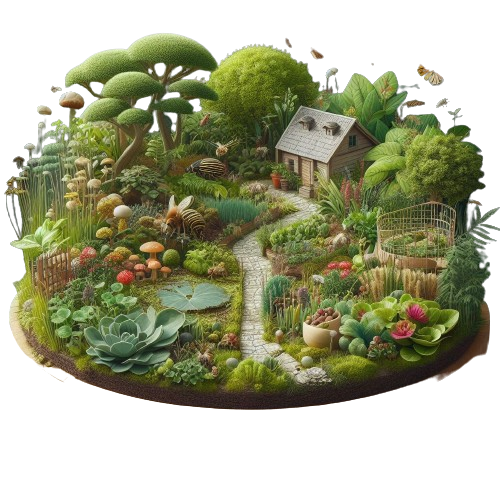
Biodiversity and Ecological Balance
Economic Advantages
Creating Job Opportunities
Implementing and maintaining edible landscapes also creates job opportunities. Landscape planning, gardening, educating, and even culinary roles could be generated, promoting economic development at the local level.
Increased Local Income through Homegrown Produce
Local income can be boosted by selling surplus homegrown produce at farmers markets or even sharing through community food cooperatives. This not only enhances the local economy, but also fosters a sense of community and shared responsibility for our food systems, taking strides in addressing the broader issue of food insecurity.
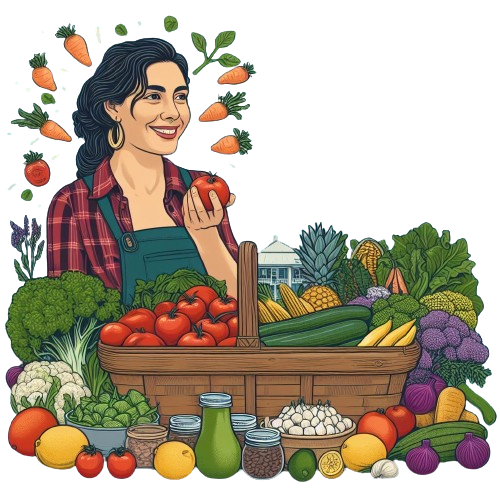
Practical Application of Edible Landscaping
Edible landscaping is more than an ideal; it’s a practical, tangible solution. Successful implementation can occur in a variety of settings, from personal backyards, public parks to educational institutions.
Home Gardens
Personal Benefits (Cost Saving, Health Improvement)
Home food gardens stand as one of the most direct applications of edible landscaping. By transforming our gardens with perennial edible landscapes and engaging in gardening edible plants, one can reap manifold benefits. Implementing practices like ‘eat your yard’ can result in significant cost savings as grocery bills decline. More notably, there are health improvements — both physical and mental — gained from gardening activity and the consumption of fresh, organic produce right from our backyards.
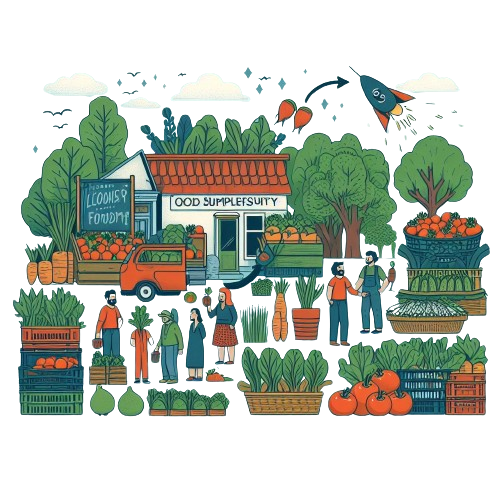
Potentials as a Community Food Source
Edible backyards and urban kitchen gardens also have potential as community food sources. Regions with a higher number of home gardens contribute to local food availability. Sharing surplus produce with neighbors, food banks, or community kitchens demonstrate how personal gardens can extend beyond individual benefits and serve the community.
Parks and Public Spaces
Promoting Social Unity and Community Involvement
Designing edible green spaces in parks and public areas promote community involvement and unity. Edible garden designs, foodscaping gardens, and fruit tree landscaping in such public areas foster a sense of collective ownership and shared responsibility. They provide a venue for community gardening initiatives, social events, and even agricultural education, bringing together individuals of all ages and backgrounds.
Impacts on Community Health and Wellness
Edible parks and public spaces also have a positive impact on local health and wellness. They provide spaces for fresh air and physical activity, contributing to better physical and mental health. Additionally, the access to free, fresh produce promotes a healthier diet within the community.
Schools and Institutions
Education and Skills Transfer
Educational institutions stand as an excellent opportunity for establishing edible landscapes.By integrating edible gardens into school grounds, students gain practical, hands-on experience in sustainability, agriculture, nutrition, and environmental studies. Consequently, this skills transfer fosters a deeper understanding of local food systems. Furthermore, this heightened awareness becomes a lifelong asset for students, as they appreciate the effort and value involved in growing our own food.

Nutrition Options for Pupils and Students
Concurrently, organic kitchen gardens installed in schools play a role in addressing nutritional intake of students. The produce from these gardens often supplements school meals, providing healthy, fresh options and also teaching students the importance and flavor of fresh-from-the-ground fruits and vegetables. Thus, schools play an essential role in fostering a generation that values and understands the relevance of edible landscaping and local food production.
Case Study – Fleet Farming Organization, Orlando
An excellent example of the successful implementation and significant impact of edible landscaping is seen in the activities of the Fleet Farming organization in Orlando, Florida. This pioneering group’s work gives a definitive shape to the theories behind foodscaping gardens and edible green spaces.
Organization’s Vision and Initiatives
Local Food Production Advocacy
Fleet Farming operates on a vision of converting underutilized spaces into productive urban kitchen gardens. They aim to establish sustainable edible gardens, advocating ‘eat your yard’ practices, engaging individuals, and communities to participate in local food production. So far, Fleet Farming has transformed countless lawns in the Orlando region into private edible backyards and public herb gardening landscapes, setting a practical example of modern-day culinary landscaping.
Community Engagement Programs
Fleet Farming has launched several community engagement programs to build environmental consciousness, emphasizing gardening edible plants. Public workshops, ‘swarm rides’ for caring for the neighborhood gardens, and farmlettes’ installations are just a few of the initiatives designed to involve community members actively in food production and environmental stewardship.
Edible Landscaping Benefits Realized
Decline in Local Food Insecurity
Fleet Farming’s initiatives have already shown a notable decline in local food insecurity, underlining the potential of home food gardens in addressing food scarcity. By encouraging communities to create their own edible garden designs, fresh produce has become more accessible, contributing to community health, nutrition, and a better quality of life.
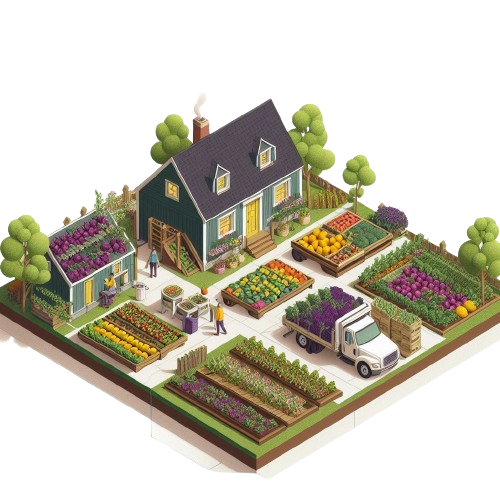
Environmental Preservation Efforts
Moreover, Fleet Farming’s environmental preservation efforts – via practices like forest garden edibles planting and fruit tree landscaping – have seen concrete results. They have proven that controlled local agriculture is not merely sustainable but can also contribute immensely to environmental preservation.
Scheduling a Consultation with Fleet Farming
Personal Hands-On Training and Learning
Fleet Farming offers personal consultations and training sessions that can help communities and individuals initiate their edible landscaping journey. By sharing their profound, practical knowledge, and hand-on training, Fleet Farming imparts essential skills for maintaining your own organic kitchen garden successfully.
Collaboration and Networking with Professionals & Community
These consultations also provide an opportunity for networking with both professionals and community members who are on a similar journey. Collaboration and knowledge exchange prove invaluable in sustaining these efforts and realizing the far-reaching benefits of transforming lawns into productive, edible landscapes.
In essence, Fleet Farming beautifully exemplifies how edible landscaping, when correctly implemented, can deliver remarkable results on a community level, tackling food insecurity head-on, and enriching communities in more ways than one.
Bringing Edible Landscaping to Life
Addressing the critical issue of food insecurity requires innovative and practical solutions, and edible landscaping stands out as a holistic approach. This method, which integrates the cultivation of edible plants into urban and suburban landscapes, offers more than just aesthetic enhancement; it serves as a foundation for food production, community involvement, and ecological conservation. By transforming spaces such as residential gardens, school grounds, and public parks into areas that grow nutritious foods, edible landscaping turns underused areas into valuable sources of fresh produce. This not only brings health and cost benefits to individuals and families but also fosters community well-being and unity.
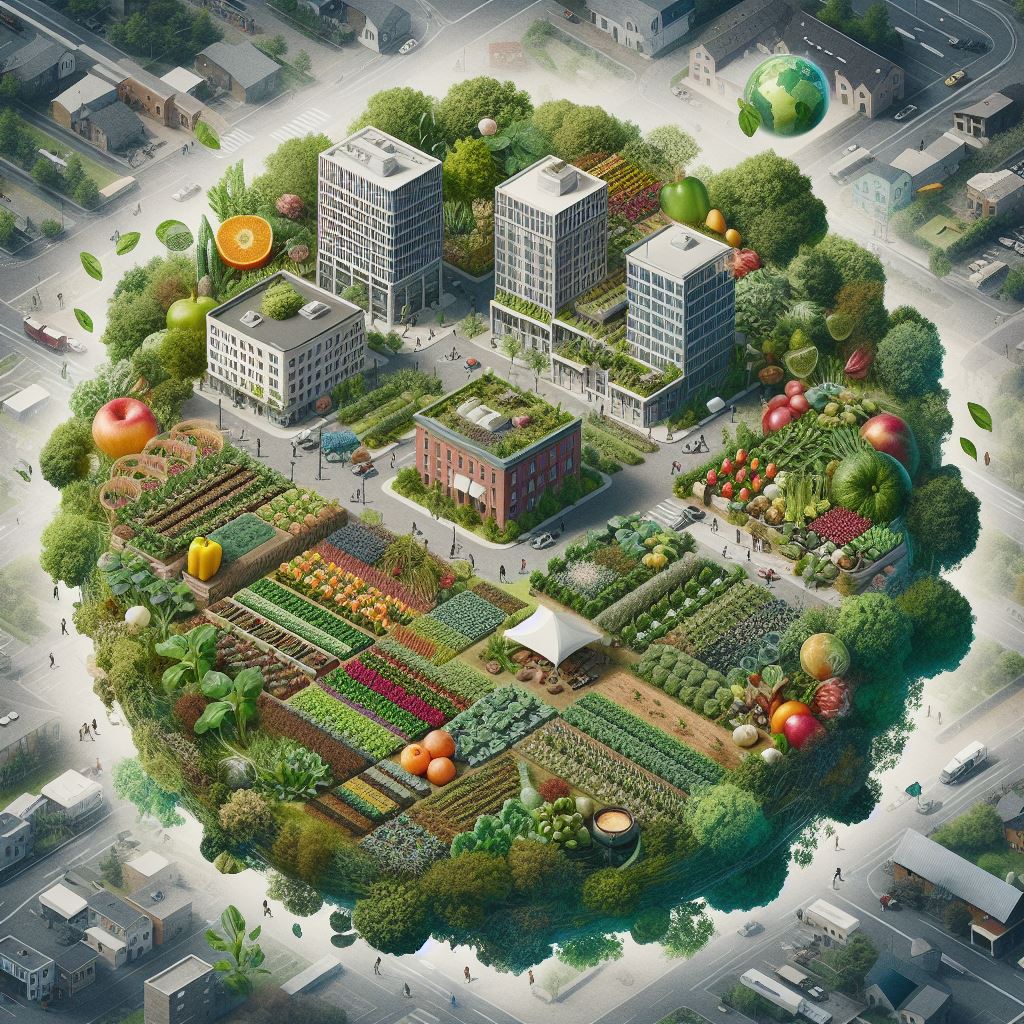
Edible Landscapes Florida exemplifies the potential and impact of this approach through its dedicated efforts in promoting edible gardens across diverse settings. Recognizing the importance of expert guidance in this transformative process, they offer garden consultations as a crucial first step. These consultations provide personalized advice and planning, helping to navigate the specifics of local climates, soil conditions, and plant selections to create thriving edible landscapes.
The transformative work of Edible Landscapes Florida mirrors the achievements seen with organizations like Fleet Farming in Orlando, which have showcased the tangible benefits of community-based foodscaping. These initiatives underscore the viability and positive outcomes of adopting edible landscaping, providing a model for sustainable, food-secure communities.
To fully realize the vision of edible landscaping, it requires collective action and commitment. From individuals embarking on their gardening journey with a consultation from Edible Landscapes Florida, to broader community participation and support for local food systems, every effort counts. Together, through the adoption of edible landscapes, we can work towards a future where environmental stewardship, community health, and food security are harmoniously intertwined, offering a sustainable solution to one of our most pressing challenges.

